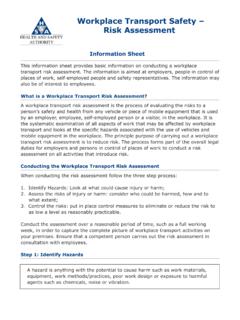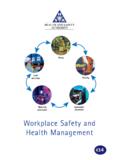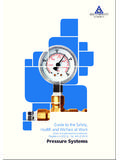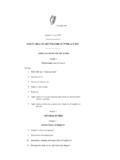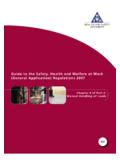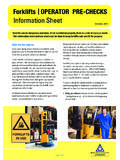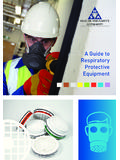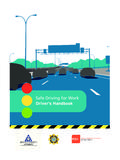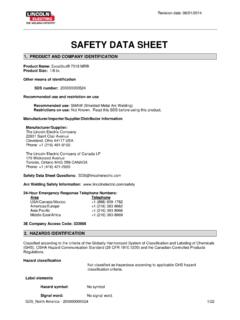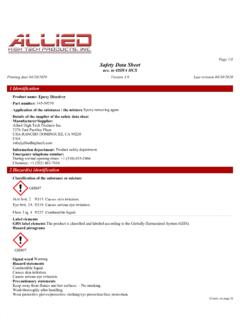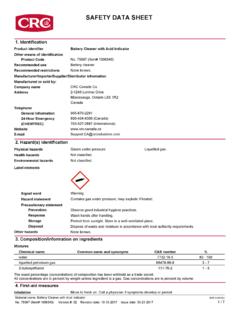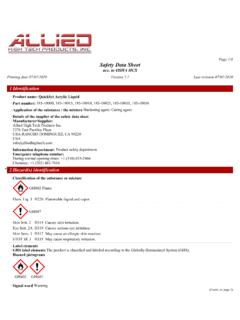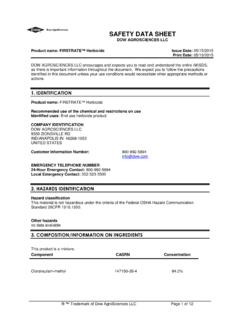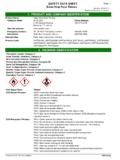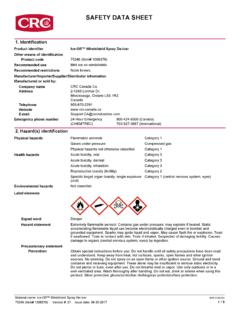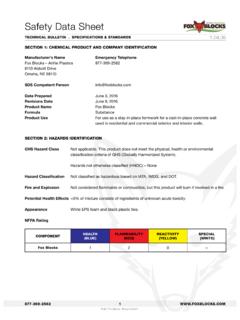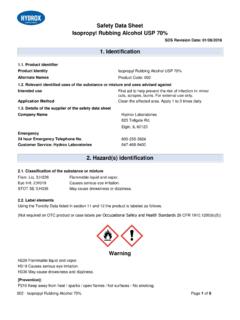Transcription of Safety Data Sheets for Hazardous Chemicals
1 In accordance with the REACH Regulation (Regulation (EC) No. 1907/2006), a Safety data sheet (SDS) should be supplied with any Hazardous chemical . Safety data Sheets (SDSs) provide useful information on Chemicals , describing the hazards the chemical presents, and giving information on handling, storage and emergency measures in case of an accident. Over the coming years, SDSs may include further information on safe handling, in the form of exposure scenarios. REACH requires users of Hazardous Chemicals to follow the advice on risk management measures given in the exposure scenario, where Identification of the substance/ 6. Accidental release measures 12. Ecological information 7. Handling and storage 13. Disposal considerations 2. Hazards identification 8. Exposure controls/personal protection 14. Transport information3. Composition/information on ingredients 9.
2 Physical and chemical properties 15. Regulatory information4. First aid measures 10. Stability and reactivity 16. Other information5. Fire-fighting measures 11. Toxicological informationSafety data Sheets must be provided for: Chemicals classified as Hazardous in accordance with Regulation (EC) No 1272/2008 on the classification, labelling and packaging of substances and mixtures (CLP)Substances meeting the criteria as persistent, bio-accumulative and toxic (PBT) or very persistent very bio-accumulative (vPvB) to the environment in accordance with REACH Substances which appear on ECHA s Candidate List of substances of very high concern (SVHC) for a reason other than either of the two points aboveMixtures (upon request of the downstream user/distributor) which themselves are not classified under CLP but which contain at least one substance that is: classified as Hazardous to health or the environment above concentration limits set out in Article 31(3) of REACH.
3 A PBT or vPvB at a concentration w/w; on the Candidate List of SVHCs at a concentration w/w for a reason other than either of the two points above; assigned an EU limit value for exposure at the workplace (OELV).A Safety data sheet must be:Prepared by a competent personIn an official language(s) of Member State where the chemical is being placed on the marketIn the required 16 heading formatSpecific to the chemicalClear and understandableProvided free of charge, either on paper or electronicallyProvided no later than at the time of first delivery Updated when new information on the chemical becomes available or when an authorisation is granted or refused or a relevant restriction is imposed under REACHP rovided to everyone who has received the chemical during the previous 12 months upon update or revisionDated and the pages numbered.
4 Safety data Sheets for Hazardous ChemicalsInformation SheetUpdated Sept 2018 Cyan 100%Magenta 76%Yellow 0 Black 27%mixture and of the company/undertaking The Safety data sheet must contain the following 16 headings:Page 2 of 4 There is an obligation on users of Chemicals to take measures to protect both humans and the environment from any hazards associated with the Chemicals . Therefore, it is important that the information provided in the Safety data sheet is taken into account and used to prepare a chemical risk assessment for the workplace. Information on Chemicals in the workplace must be provided to all employees and the SDS is a useful tool in communicating the hazards of these Chemicals and the measures of protection to be taken when using them. Each section of the SDS contains specific information relating to the 1 contains contact details of the person/company responsible for supplying the chemical , the uses of the chemical , as well as the telephone number to contact in case of an emergency (see details on page 4 of this info sheet ).
5 Section 2 gives details on the hazards of the chemical and the potential effects and symptoms resulting from use. This will help in the assessment of the risks to health, the health of workers and the environment. All Hazardous substances and mixtures must be classified and labelled according to the CLP Regulation. Therefore, pictograms, the signal word, hazard and precautionary statements must appear in section 2. The information in this section must be consistent with the information on the 3 This section provides information on the identity, hazards and concentration of individual substances in a mixture. In the case of a SDS for a substance, this section provides the identity of the 4 describes the necessary first aid measures to be taken in case of an 5 gives specific information on fighting a fire caused by the chemical , including the most suitable extinguishing media and protective information should be taken account of in a Safety data sheet ?
6 Safety data Sheets for Hazardous ChemicalsInformation SheetPage 3 of 4 Section 6 describes what actions need to be taken if there is an accidental release of the chemical . Section 7 contains details on how to handle and store the chemical 8 Section 8 gives details of the steps needed to reduce exposure, ventilation and personal protective equipment (PPE) necessary to protect health, as well as occupational exposure limit (OEL) values where 9, 11 and 12 provide detailed information on the physical/ chemical , toxicological and ecological properties of the 10 contains details of any Hazardous reactions that may occur if the chemical is used under certain 13 explains how the chemical should be disposed of 14 contains information relating to the transportation of the 15 contains details on relevant EU/national legislation. Section 16 gives any other information relevant to the chemical training advice, full text of hazard statements addition, SDSs for substances or for mixtures containing substances that have been registered under REACH are required to include: Registration numbers where appropriate Exposure Scenarios including any risk management measures required, in an Annex to the SDS for Hazardous substances registered at >10 should be done when a Safety data sheet is received?
7 Ensure that there are 16 headings Check that it is in English and is clear and concise Check that it is dated and any revision date and details of revisions are provided Ensure that the details on the chemical s label are exactly as given in section 2 of the SDS Contact the supplier and request an updated version if not satisfied with the information provided Use the information to prepare chemical risk assessments, inform employees of the hazards of the chemical , the protective measures to be taken when using it and the measures to be taken in an emergency Store the SDS, either as a hard copy or electronically, in a place that is known to, and accessible to, all employees It is advisable to keep a chemical inventory of all Chemicals on site and SDSs are a useful tool in helping to keep account of all substances in the workplace It is also good practice to regularly check the SDSs to ensure that multiple or out-of-date copies are not being stored If there is an Exposure Scenario annexed to the SDS, ensure the risk management measures relevant to the use of the substance are in place.
8 Safety data Sheets for Hazardous ChemicalsInformation SheetSafety data Sheets for Hazardous ChemicalsInformation SheetTips for formulators who prepare and supply SDSs to their customers Ensure that the SDS is in compliance with Annex II (as updated by Reg. (EU) No. 2015/830) of the REACH Regulation Ensure that the person responsible for compiling the SDS is competent, that is, that they have the relevant experience, knowledge and training Provide the e-mail details of the competent person in section 1, along with the company s address and telephone number and the emergency number Ensure that the SDS is specific to the chemical being supplied and not generic Ensure that the recipient of the chemical receives a SDS for that chemical free of charge, on paper or electronically, no later than at its time of delivery Where a mixture is not classified itself but contains Hazardous substances.
9 Ensure a SDS is supplied upon request to downstream users or/ distributors Update the SDS without delay with any new information on the chemical Remember that the classification provided on the label of the chemical must be identical to that given in section 2 of the emergency number should be provided in section any mixture classified as Hazardous on the basis of its health and/or physical effects and placed on the Irish market, it is obligatory for importers and formulators to include the National Poisons Information Centre (NPIC) emergency number in section The NPIC emergency number cannot be used in Section of an SDS until the notification process is complete. The notification process is explained on the NPIC website placing chemical products on the market in other EU Member States, the respective national poison centre number, where established, is required to be included in Section of the SDS.
10 Further information is available on the ECHA website under the National Helpdesk contact mixtures which are not classified as Hazardous (but do require a SDS based on the presence of Hazardous ingredients), mixtures which are classified for environmental hazards only and for substances, reference to an emergency service belonging to the supplier himself or to a competent third party provider of such a service must be the supplier provides his own emergency information service, be it alone or in combination with an official advisory body or other provider, the necessary competence should be limitations on the official advisory body, the supplier s own, or any third party s services (opening hours or types of information that can be provided) must be indicated. Page 4 of 4 Further Information and Guidance:Visit our website at , telephone our contact centre on 1890 289 389 or email BeSMART, our free online risk assessment tool at out our range of free online courses at 100%Magenta 76%Yellow 0 Black 27%Further informationThe Chemicals web pages on the Health and Safety Authority s web site: labelling and packaging according to the CLP Regulation Information sheet on the HSA website: Contact our Chemicals Helpdesk with any questions on 1890 289 389 or email on compilation of Safety data Sheets available on the web site of the European Chemicals Agency (ECHA) at
